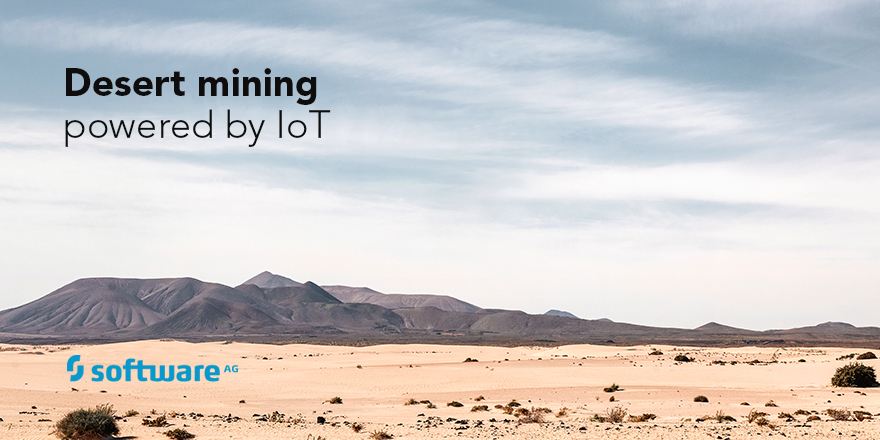Remote IoT monitoring keeps mine workers safe
Next time you enjoy some fresh vegetables, give a small nod of thanks to the Internet of Things (IoT).

That’s because the fertilizer used to grow those vegetables may have come from deep beneath the desert sands of Utah. Under the sands lies phosphate-rich water that is carefully excavated, dehydrated, processed, and eventually sent to your local gardening outpost. It’s quite a journey—fraught with risk and uncertainty.
The boreholes used to tap the water are generally stable–but not always. They require monitoring and maintenance, which traditionally is done by humans. The locations can be both remote (hundreds of miles from the nearest city) and extreme (temperatures can rise or fall by more than 50 degrees in a few hours).
At one phosphate mine deep in the Utah desert, getting there—or getting emergency help and replacement parts if something goes wrong—is a Herculean task. There are no roads to speak of, just dusty trails that turn into mucky clay pits after rainfall that clog even the most rugged off-road tires. In the winter, snowcats are the only option. The round trip takes a small team several days and careful planning. On top of that, this particular location had no power and no Internet connection.
What if there was a way to first get power and communications to such a location? And what if there was a way to monitor the mines without human intervention until absolutely necessary?
These were the questions facing FGR, an engineering firm that specializes in solving just such industrial problems. The solution? Get to work on building an IoT solution.
FGR built and installed solar panels to provide power for a data communications system. With that in place, it started embedding sensors and connecting systems. The boreholes, that otherwise would need hands-on inspections, were outfitted with temperature, moisture and pressure gauges. This means that FGR’s customer can monitor the mines remotely from its headquarters – no snowcats or workers required (unless they need to intervene before a serious issue arises).
But this remote monitoring requires more than just sensors – it requires a system to capture, analyze and communicate the data. For context, it needs to pull in external data like weather conditions. FGR turned to Cumulocity IoT as the partner to provide that system.
With the infrastructure, sensors and analytics in place, FGR’s customer could sleep better at night, knowing it is running a safer mine and reaping the benefits of a more efficient operation.
So, go enjoy those vegetables—but give a bit of credit to the IoT.